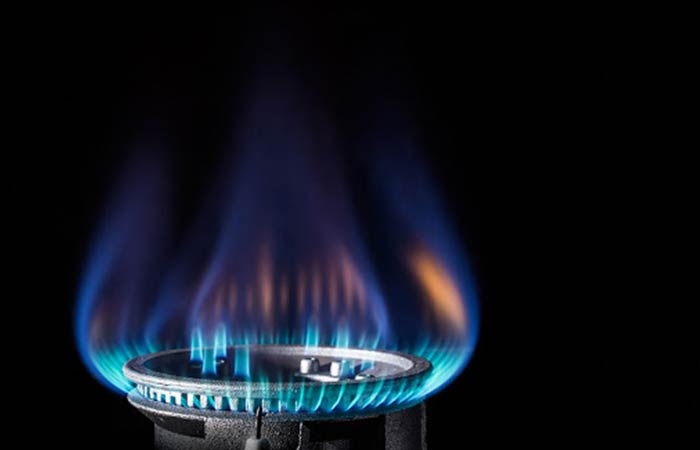Natural gas is one of the most preferred sources of power (electricity) for the masses thanks to its efficiency and being less of a pollutant than coal. The process of producing power from natural gas is quite simple as it employs the turbine technology which is used in other production processes such as hydroelectricity, wind power and others.
There are several ways natural gas is used to produce electricity with two of the main methods being the open cycle and the combined cycle. The open cycle is whereby natural gas is burned to produce steam which turns turbines that produce electricity. The combined cycle uses the open cycle method and also uses the heat from the burning process to heat water that produces steam to turn a second turbine that also produces electricity.
This is a guide on how power is generated from natural gas with the focus being on the main processes of power production, the advantages and disadvantages of using natural gas for power production, and the worldwide statistics on natural gas use as a source of power.
Power Production Methods from Natural Gas
The main methods for producing power from natural gas are as follows:
1. Open Cycle Method
The open cycle method, also called the simple cycle method, is whereby natural gas is burned to produce steam at a high pressure. This steam is directed into a turbine where it spins the blades of the turbine. The turbine then turns a generator.
The generator has magnets within it which are spurn by the motion of the turbines. The spinning of the magnets cause the electrons in the wires to start moving and create an electrical current in the process. The result is electricity.
The open cycle method is much more flexible given the simpler mechanics and can thus be used in emergencies. This is because it can be turned on and off quickly whenever the need arises.
2. Combined Cycle Method
The combined cycle method uses the open cycle and a second stage to the production of power from natural gas. The heat produced in the burning of natural gas is harnessed in the second stage to heat water. The steam produced is used to drive a second turbine to produce electricity as well. This increases the efficiency of the power production process as it produces about 50% more power from the same materials and time as the open cycle method. The process of using the heat produced in the open cycle to further produce electricity is called cogeneration.
The combined cycle system is the preferred method of power production from natural gas and it’s used by most power stations around the world. It’s used to supply baseload power. On the other hand, the open cycle method is used to provide power during periods of peak demand such as the hot days of summer.
The Electricity Production Process
The natural gas turbine is a simple mechanism with the following parts and stages:
Stage1. Compressor
The compressor sucks in air then compresses it to increase its pressure.
Stage2. Combustor
This part burns the natural gas with the air producing air at a high pressure and high speed.
Stage3. Turbine
The turbine is spurn by the air at high spin effectively harnessing the motion. The excess air is then let out through the exhaust part of the turbine.
Stage4. Power production
The motion from the turbine is used to spin magnets in a generator which produces electricity.
The power produced is channeled to a transformer then into the national grid.

Advantages of Using Natural Gas for Power Production
Some of the benefits of using natural gas to produce power include the following:
1. Cleaner than other methods
Apart from renewable energy, natural gas is one of the cleanest sources of power production on a large scale. Although it produces some greenhouse gases, they’re only about half of what using coal to produce power emits.
2. It’s affordable
Compared to a coal plant for example, a natural gas plant needs less time and money to build and run thanks to the simpler mechanics and ease of use. Besides costing less than coal to mine, natural gas also uses cheaper infrastructure to produce electricity. It’s also due to the fact that the process has been done so many times it’s easy to be replicated on different scales.
3. Safer to store
When compared to other fossil fuels, natural gas is far much safer to store in large amounts hence preferred over the others.
4. Reliable
Natural gas is one of the most reliable sources of power as it can’t be affected by the environment. For example, natural power plants aren’t easily affected by storms and other such occurrences. Another level of reliability is in the form of not relying on certain conditions to work. Wind and solar electricity require the wind and the sun to be there and in certain amounts to produce power. Natural gas doesn’t need that.
5. Abundant
As per the estimates of the International Energy Agency (IEA), there is enough natural gas on earth to last 230 years with the current consumption levels. Although it’s estimated that power consumption will go up, natural gas is so abundant that it’ll still be enough for everyone. Even then, not all the natural gas reserves on the planet have been explored yet.
These advantages make it easy to choose natural gas over the other sources of electricity.
Disadvantages of Using Natural Gas for Power Production
On the downside, natural gas has the following disadvantages when used to produce power:
1. Produces greenhouse gases
While natural gas is termed a clean source of energy, it still harms the environment when used to produce power as it produces greenhouse gases such as carbon dioxide and methane when burned. Although cleaner than coal plants, natural gas plants have more emissions than even nuclear plants hence not the most ideal source of power for the environment.
2. Risky
Although safer than other fossil fuels, natural gas is still highly combustible and can catch fire quite easily if not properly taken care of.
These disadvantages aren’t enough to deter the use of natural gas on a large scale to power our homes and plants.
Natural Gas Use Worldwide
Even with the fact that natural gas is one of the main pollutants in the world, it’s used to produce about 23% of the world’s electricity with that figure meant to grow with time. In terms of power production worldwide, the following are the percentages of each source of power:
- Coal and coal products – 39.3%
- Natural gas – 22.9%
- Hydro power – 16%
- Nuclear – 10.6%
- The rest (solar, wind, oil products, waste, biofuels, crude oil, NGL, feedstocks, geothermal, peat and peat products and heat) – 11.2%
There are efforts to reduce on the amount of greenhouses gases from the use of natural gas in the production of electricity. This is aimed at reducing the levels of pollution on the planet.
